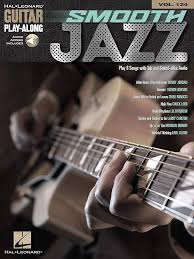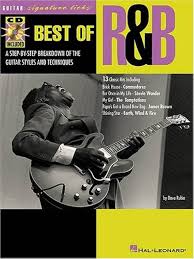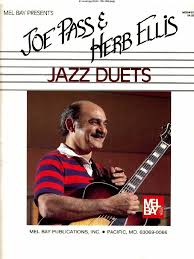Come join us now, and enjoy playing your beloved music and browse through great scores of every level and styles!
Can’t find the songbook you’re looking for? Please, email us at: sheetmusiclibrarypdf@gmail.com We’d like to help you!
Table of Contents

Best Sheet Music download from our Library.

Please, subscribe to our Library.
If you are already a subscriber, please, check our NEW SCORES’ page every month for new sheet music. THANK YOU!
Remembering Emily Remler, born on this day in 1957 (1957-1990)
The Brilliant Flame: An Exhaustive Study of Jazz Guitarist Emily Remler
The history of jazz is illuminated by stars whose light burns with an intense, captivating brilliance, only to be extinguished far too soon. Emily Remler is one such star. In a career spanning just over a decade, she established herself not only as one of the preeminent jazz guitarists of her generation but also as a rare female instrumentalist who earned unwavering respect in a male-dominated field. Her style was a masterful synthesis of cool-bop lyricism, blues-inflected soul, and rhythmic sophistication, all delivered with a flawless technique that never sacrificed emotion for virtuosity. Though her life was tragically cut short at the age of 32, her recorded legacy and pedagogical contributions continue to inspire and educate guitarists and jazz enthusiasts worldwide.
Biography: A Meteoric Ascent
Early Life and Influences (1957-1976)
Emily Remler was born on September 18, 1957, in Englewood Cliffs, New Jersey, into a non-musical but supportive family. Her initial musical interests leaned toward the folk and rock of the 1960s, inspired by artists like James Taylor and Johnny Winter. She received her first guitar at age ten. However, a pivotal moment occurred at age 14 when she heard a recording of the great Wes Montgomery. This was her gateway into jazz. She later cited Montgomery as her “first and biggest influence,” whose melodic, octave-based style became a foundational element of her own sound.
She began transcribing Montgomery’s solos note-for-note, an invaluable exercise that ingrained the language of bebop into her musical DNA. She also deeply studied the work of other guitar giants like Joe Pass, Pat Martino, and Herb Ellis, as well as horn players like John Coltrane and Sonny Rollins, whose linear improvisational concepts greatly influenced her phrasing.
Browse in the Library:
Or browse in the categories menus & download the Library Catalog PDF:
Education and Early Career (1976-1981)
At 18, Remler enrolled at the Berklee College of Music in Boston. Her talent was immediately evident. She immersed herself in the rigorous curriculum, studying harmony, composition, and improvisation while honing her chops playing in local clubs. It was during this time that she began to develop her signature sound—a warm, clean tone, often using a Gibson ES-330 or a custom-made guitar by luthier Bill Hollenbeck.

After graduating in the late 1970s, she moved to New Orleans. The city’s vibrant, blues-drenched music scene had a profound impact on her playing, adding a gritty, soulful dimension to her bebop foundation. She played regularly at famous spots like Snug Harbor, often alongside such New legends as pianist James Williams and bassist Don Thompson. It was in New Orleans that she began to attract significant attention.
Her big break came in 1978 when she was asked to open for the legendary vocalist Nancy Wilson at the Great American Music Hall in San Francisco. Wilson, impressed by the young guitarist’s poise and skill, became a mentor and champion. This exposure led to her first major recording contract.
Rise to Prominence and Concord Years (1982-1988)
In 1981, she signed with Concord Jazz, a label known for its straight-ahead, mainstream jazz roster. Her debut album, “Firefly” (1981), was a critical success. It showcased her already mature voice as both a player and a composer, featuring original tunes like the title track “Firefly” and “Carenia.” The album announced the arrival of a major new talent, drawing comparisons to her heroes but establishing a distinct identity.

This was followed by a rapid succession of acclaimed albums on Concord:
- “Take Two” (1982) with pianist Hank Jones
- “Transitions” (1983)
- “Catwalk” (1985)
- “Together” (1985) with Brazilian guitarist Larry Coryell, a collaboration that highlighted her affinity for Latin rhythms.
- “East to Wes” (1988), a tribute to her two primary influences: Wes Montgomery and pianist Wes Montgomery.
During this period, she toured extensively internationally, performing at major jazz festivals and clubs. She also became a regular contributor to guitar magazines, writing instructional columns that displayed her deep theoretical knowledge and her gift for clear, effective teaching.
Later Years and Tragic End (1988-1990)
The pressures of the jazz life, constant touring, and personal struggles began to take their toll. Remler battled heroin addiction, a fight that remained largely private from her public persona.

In 1989, she released “This Is Me” on the Justice label, a album that signaled a new direction. It incorporated more electric elements, synthesisers (played by her then-husband, keyboardist Monty Alexander), and a contemporary jazz-funk feel. While some purists were surprised, it demonstrated her artistic restlessness and desire to evolve.
In May 1990, while on a tour in Australia, Emily Remler suffered a fatal heart attack. The autopsy revealed the cause was due to drug-related complications. The jazz world was stunned. A voice of immense talent and potential was silenced, leaving behind a legacy that, while compact, remains powerful and enduring.
Music Style and Improvisational Language
Emily Remler’s style was a sophisticated blend of several key elements:
- Bebop Foundation: Her improvisations were built on the complex harmonic and melodic language of bebop. She had an exceptional ability to navigate chord changes with fluid, horn-like lines that were both logical and inventive.
- Wes Montgomery’s Legacy: The influence of Wes Montgomery was omnipresent but not imitative. She masterfully employed his techniques: the use of octaves for melodic strength and a warm, thumb-picked sound. However, she often played with a slightly sharper attack and a brighter tone than Wes.
- Blues and Soul Inflection: Her time in New Orleans instilled in her a deep, authentic blues feeling. She could weave soulful, bent-note phrases into the most complex bebop line, grounding her music in raw emotion.
- Rhythmic Precision and Drive: Her time feel was impeccable. Whether swinging hard on an uptempo tune or laying back on a bossa nova, her sense of rhythm was propulsive and sure-footed. She had a particular genius for constructing solos that built in intensity naturally.
Improvisational Licks and Concepts:
Analyzing Remler’s solos reveals a vocabulary rich with bebop devices:
- Chromaticism and Enclosures: Like Charlie Parker and Clifford Brown, she frequently used chromatic approach notes to “encircle” a target chord tone, creating tension and resolution.
- Example: Over a C7 chord, a line might be: B♭ (chromatic below) – A (scale tone) – B♮ (chromatic above) – C (target chord tone).
- Arpeggiation and Sequencing: She would often outline chord changes by creatively arpeggiating the harmony, not just vertically but by sequencing patterns through different scales.
- Motivic Development: A hallmark of a mature improviser, Remler would take a small melodic motif (a short sequence of notes) and develop it throughout her solo, transposing it to fit new chords, inverting it, or rhythmically displacing it.
- Hybrid Picking: While she primarily used a pick, she would often incorporate fingerstyle techniques to articulate fast, complex lines with clarity, especially in her chord-melody work.
Cooperation with Other Artists
Remler collaborated with a diverse array of jazz luminaries, each partnership highlighting a different facet of her talent:
- Herb Ellis: The great swing/bop guitarist became a close friend and collaborator. Their mutual admiration was evident in their performances, a meeting of two generations of guitar mastery.
- Larry Coryell: Their duo album “Together” was a summit meeting of two distinct but compatible styles. They traded blistering lines on uptempo burners and displayed exquisite sensitivity on ballads and Brazilian tunes.
- Hank Jones: Recording with the elegant pianist of the Jones dynasty on “Take Two” was a testament to her standing. Jones only played with musicians of the highest caliber, and his presence on her album was a significant endorsement.
- John Hicks, Buster Williams, and Marvin “Smitty” Smith: She frequently worked with this powerhouse rhythm section, which provided a deep, swinging foundation that pushed her to some of her best recorded performances.
- Nancy Wilson: As her early champion, Wilson provided a crucial platform and the mentorship of an established star.
Chord Progressions and Music Harmony
Remler was a sophisticated harmonic thinker, both as an improviser and a composer. Her original compositions often featured rich, challenging progressions that moved beyond simple blues and rhythm changes.
- Reharmonization: She was adept at substituting chords to create more movement and color in a standard progression. For example, in a II-V-I (Dm7-G7-Cmaj7), she might use a diminished passing chord or alter the V7 chord (G7♭9, G7♯9) for dramatic effect.
- Modal Interchange: She frequently borrowed chords from parallel minor or major scales. A classic example is using a ♭VI7 chord (e.g., A♭7 in the key of C) for a bluesy, dramatic pull.
- Voice Leading: Her chord-melody arrangements, a skill she demonstrated masterfully on tunes like “The Way You Look Tonight,” are studies in beautiful voice leading. Each note in the chord progression moves smoothly to the nearest note in the next chord, creating a seamless, lyrical flow even in the most complex harmonies.
- Original Compositions: Tunes like “Carenia” and “Firefly” demonstrate her compositional voice: modern post-bop harmonies with strong, memorable melodies. They are harmonically engaging vehicles for improvisation, built on cycles of fifths and modulations that keep soloists on their toes.

Influences and Legacy
Influences:
- Primary: Wes Montgomery (guitar, concept, melody)
- Guitar: Joe Pass, Pat Martino, Herb Ellis, Jim Hall
- Horns: John Coltrane, Charlie Parker, Sonny Rollins, Clifford Brown
- Piano: McCoy Tyner, Bill Evans
- General: The music of Brazil (Antonio Carlos Jobim)

Legacy:
Emily Remler’s legacy is multifaceted:
- A Trailblazer for Women in Jazz: In the 1980s, it was still uncommon to see a woman leading a band as an instrumentalist, particularly on guitar. Remler broke down barriers purely through the force of her artistry. She refused to be pigeonholed as a “female guitarist,” insisting on being judged solely as a “guitarist.” She paved the way for countless women who followed.
- An Enduring Pedagogical Influence: Her instructional columns in Guitar Player magazine and her two highly regarded video lessons, “Advanced Jazz and Latin Improvisation” and “Bebop and Swing Guitar,” remain invaluable resources. In them, she demystifies complex jazz concepts with patience and clarity, offering a direct window into her practiced methodology.
- A Musical Standard: Her recordings are considered essential listening for any student of jazz guitar. They represent a perfect blend of technical mastery, deep swing, blues feeling, and melodic invention. She demonstrated how to absorb influences completely and then synthesize them into a unique personal voice.
Discography (As Leader)
- Firefly (Concord Jazz, 1981)
- Take Two (Concord Jazz, 1982) with Hank Jones
- Transitions (Concord Jazz, 1983)
- Catwalk (Concord Jazz, 1985)
- Together (Concord Jazz, 1985) with Larry Coryell
- East to Wes (Concord Jazz, 1988)
- This Is Me (Justice Records, 1990)
Most Known Compositions and Performances
- “Firefly”: Her most famous original composition, an upbeat, cleverly constructed tune with a catchy head.
- “Carenia”: A beautiful, lyrical waltz that showcases her compositional depth.
- “Mocha Spice”: A funky, bluesy original that highlights her soulful side.
- “Hot House” (Tadd Dameron): Her renditions of this bebop standard are masterclasses in navigating complex changes at high tempo with clarity and invention.
- “Afro Blue” (Mongo Santamaria): A staple of her live sets, allowing her to explore modal harmony and build intense rhythmic momentum.
- “The Way You Look Tonight” (Jerome Kern): Her chord-melody arrangement of this standard is often cited as a benchmark for jazz guitarists.
Filmography
While there is no dedicated documentary about her life (a significant omission in the jazz world), Emily Remler’s pedagogical videos constitute her primary film legacy:
- “Emily Remler: Advanced Jazz and Latin Improvisation” (Hot Licks, 1985)
- “Emily Remler: Bebop and Swing Guitar” (Hot Licks, 1988)
These videos are priceless documents. In them, she is articulate, humble, and brilliantly instructive, breaking down her solos, demonstrating practice techniques, and performing with her trio. They capture not just her knowledge but her warm and genuine personality.
Emily Remler’s story is one of extraordinary talent, dedication, and tragic loss. In her short life, she achieved a level of artistic excellence that many musicians spend a lifetime pursuing. She was a complete musician: a virtuoso instrumentalist, a inventive composer, a compelling bandleader, and a gifted educator. Her music continues to resonate because it was built on the timeless principles of swing, blues, and melodic truth. She was not a flash in the pan but a deep-rooted tree in the forest of jazz, and though the tree was felled too soon, its seeds have spread far and wide. For guitarists and jazz fans, discovering Emily Remler is like finding a hidden treasure—a brilliant, burning flame that continues to light the way.
Emily Remler plays “Blues For Herb”
Jazz guitar virtuoso Emily Remler performs her composition “Blues For Herb.”
Browse in the Library:
Or browse in the categories menus & download the Library Catalog PDF:
Emily Remler – “Cookin’ at the Queens: Live in Las Vegas (1984 & 1988)” (Mini-Documentary)
“Cookin’ at the Queens: Live in Las Vegas (1984 & 1988)” is the first release in 34 years from the unsung jazz guitar great Emily Remler, and it’s a previously unreleased collection of performances that were broadcast on KNPR Las Vegas as part of Alan Grant’s “4 Queens Jazz Night from Las Vegas” weekly radio program in 1984 and 1988. Released in cooperation with the Emily Remler Estate, the limited-edition 180-gram 3-LP set is mastered for vinyl from the original tape reels in the UNLV archives by Bernie Grundman, and features quartet performances with pianist Cocho Arbe, bassist Carson Smith and drummer Tom Montgomery (1984), and trio performances with bassist Carson Smith and drummer John Pisci (1988).
